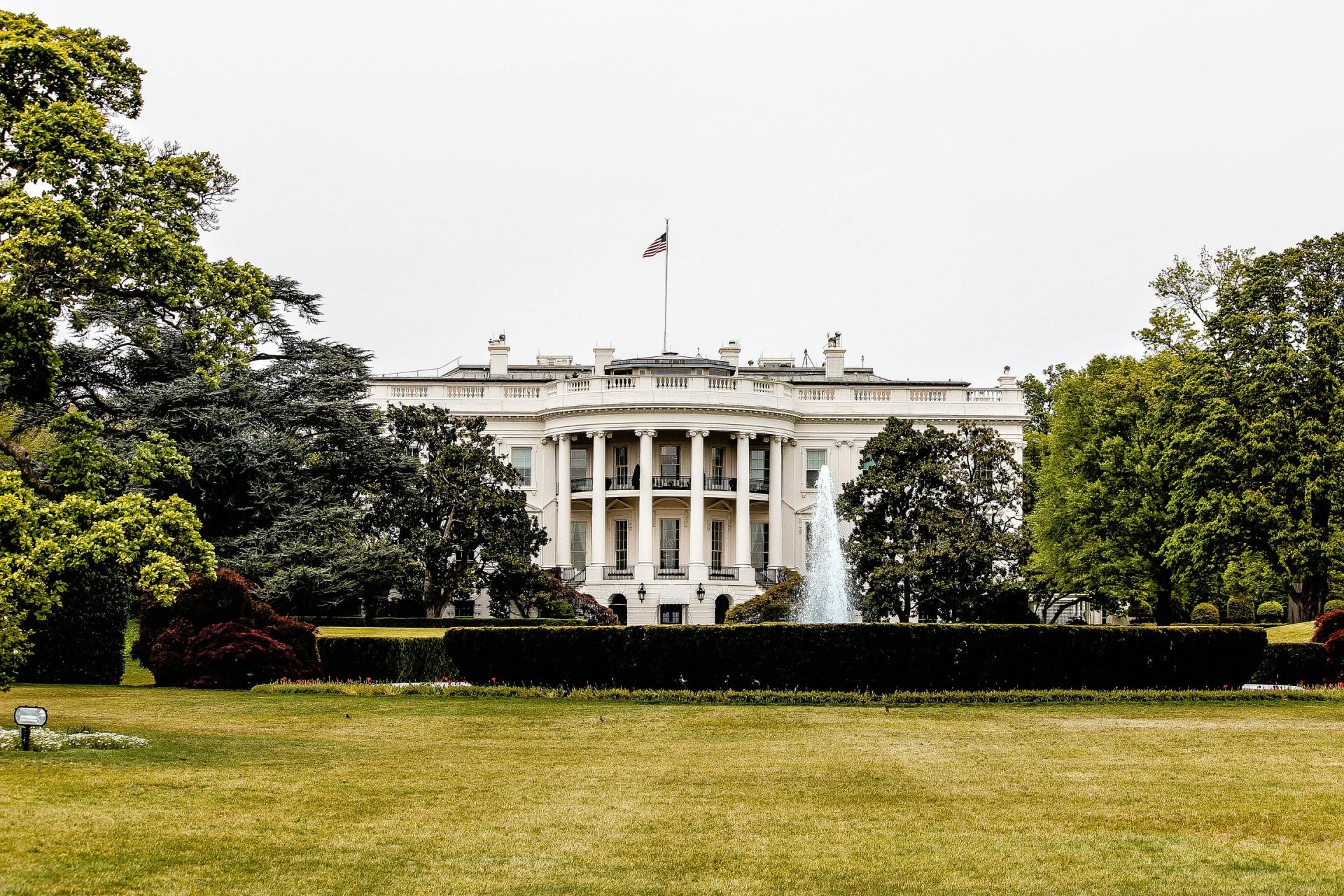The White House
ABOUT THE WHITE HOUSE
Washington, D.C., has not always looked like it does today. Once it was a sleepy little village with only a few buildings. There were no good roads into the village, and no good docks for boats.
About two hundred years ago, when the United States was a brand-new country, people began to talk about where the president should live. Should the president live in the North or the South? Should the president’s house be a palace, like kings live in, or a simpler house?
While Congress debated what to build and where to build it, our first president, George Washington, lived in three houses. The first two were in New York City. The third was in Philadelphia, Pennsylvania. Finally, Washington decided to compromise. He picked a patch of land on the Potomac River.
Both Maryland and Virginia gave land for the new capital. The land was on the border of the North and the South. At that time, there were no western states! George Washington named the land the District of Columbia, in honor of Christopher Columbus.
President Washington hired people to plan a new city. Washington, D.C., is one of the only cities in the world that was designed before it was built. First, Benjamin Banneker and Andrew Ellicott made maps of the land. Then Pierre Charles L’Enfant decided where to put the roads. Washington decided to put the Capitol Building on a hill at one end of the city, and the president’s house on a hill at the other end.
Next it was time to decide what kind of house to build for the president. Thomas Jefferson suggested having a contest. He advertised the contest in newspapers across the country. A committee picked a simple but elegant design by James Hoban, a young Irish American architect.
The first stone was laid on October 13, 1792. It took eight years to finish enough of the house to make it livable. The Capitol Building wasn’t completed yet, and congressmen lived in boardinghouses surrounded by farmland. John Adams, the second president of the United States, moved into a cold, damp White House in November 1800. Abigail Adams hung her laundry up to dry in the East Room. She thought it would be bad manners to hang the president’s laundry outside.
By the time our third president, Thomas Jefferson, moved into the White House in 1801, most of the outside structures were finished. The White House was the largest residential house in America! Jefferson ordered wallpaper and furniture from France. Every president since has ordered special things for the house. Today, you can see chairs that people sat on more than one hundred years ago! During this time, the building was called the President’s Palace, and then the President’s House.
Then James Madison was elected president. During his term of office, the United States went to war with England. It was the War of 1812. As the British troops got close to Washington, Madison’s wife, Dolley, ordered a carriage to pick her up and take her to safety. But she would not leave the house until two men agreed to take down the famous portrait of George Washington. The troops set fire to the Capitol Building and the White House. Today, the picture that Dolley saved is the only thing that has been in the White House since it first opened. When the war was over, the house was rebuilt and repainted white to cover the smoke marks. People began to call it the White House.
Adapted from The Story of the White House by Kate Waters. (Copyright 1991. Published by Scholastic.)
HISTORY OF THE WHITE HOUSE: AN AMERICAN TREASURE
For almost 200 years, the White House has stood as a symbol of the Presidency, the United States government, and the American people. Its history and the history of the nation’s capital began when President George Washington signed an Act of Congress in December of 1790 declaring that the federal government would reside in a district “not exceeding ten miles square . . . on the river Potomac.” President Washington, together with city planner Pierre L’Enfant, chose the site for the new residence, which is not 1600 Pennsylvania Avenue. As preparations began for the new federal city, a competition was held to find a builder for the “President’s House.” Nine proposals were submitted, and Irish-born architect James Hoban won a gold medal for his practical and handsome design.
Construction began when the first cornerstone was laid in October of 1792. Although President Washington oversaw the construction of the house, he never lived in it. It was not until 1800, when the White House was nearly completed, that its first residents, President John Adams and his wife Abigail, moved in. Since that time, each President has made his own changes and additions. The White House is, after all, the President’s private home. It is also the only private residence of a head of state that is open to the public free of charge.
The White House has a unique and fascinating history. It survived a fire at the hands of the British in 1814 during the War of 1812, and another fire in the West Wing in 1929 while Herbert Hoover was President. Throughout much of Harry S. Truman’s presidency, the interior of the house was completely gutted and renovated while the Trumans lived at Blair House, right across Pennsylvania Avenue. Nonetheless, the exterior stone walls are those first put in place when the White House was constructed two centuries ago.
Presidents can express their individual style in how they decorate the house and in how they receive the public during their stay. Thomas Jefferson held the first Inaugural open house in 1805. Many of those who attended the swearing in ceremony at the U.S. Capitol simply followed him home, where he greeted them in the Blue Room. President Jefferson also opened the house for public tours, and it has remained open, except during wartime, ever since. In addition, he welcomed visitors to annual receptions on New Year’s Day and the Fourth of July. In 1829, a horde of 20,000 Inaugural callers forced President Andrew Jackson to flee to the safety of a hotel while, on the lawn, aids filled washtubs with orange juice and whiskey to lure the mob out of the mud-tracked White House.
Soon after Abraham Lincoln’s presidency, Inaugural crowds became far too large for the White House to accommodate them comfortably. However, not until Grover Cleveland’s first presidency did this unsafe practice change. He held a presidential review of the troops from a flag-draped grandstand built in front of the White House. This procession evolved into the official Inaugural parade we know today. Receptions on New Year’s Day and the Fourth of July continued to be held until the early 1930s.
President Clinton’s open house on January 21, 1993, renewed a venerable White House Inaugural tradition. Two thousand citizens, selected by lottery, were greeted in the Diplomatic Reception Room by President and Mrs. Clinton and Vice President and Mrs. Gore.
Adapted from “The White House: The House of the People”, by the White House Historical Association.
SOURCES




